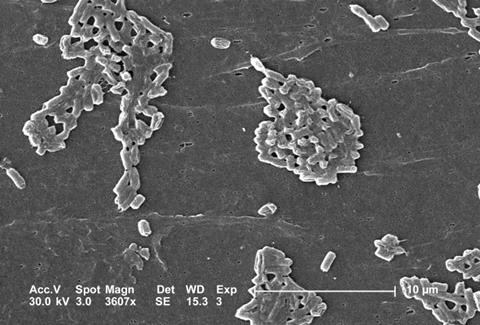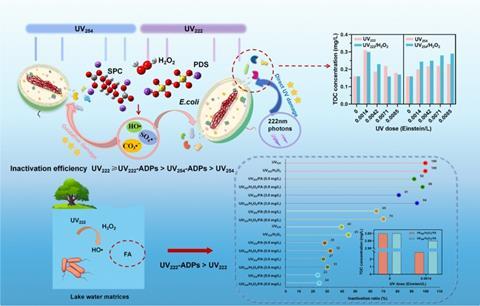Researchers from Xiamen University of Technology have conducted a study entitled “Comparison of E. coli inactivation by UV222-ADPs and UV254-ADPs in water”. This study was published in Frontiers of Environmental Science & Engineering, Volume 19, Issue 5.

Pathogenic microorganisms pose a significant threat to water safety. Emerging disinfection processes that combine far-ultraviolet radiation with oxidants offer promising strategies for controlling these pathogens.
READ MORE: Germicidal UV lights could be producing indoor air pollutants, study finds
READ MORE: Chlorine plus UV light degrades toxins caused by harmful algae blooms
This study investigated advanced disinfection processes (ADPs) that use 222 and 254 nm far-ultraviolet radiation in conjunction with hydrogen peroxide (H2O2), sodium percarbonate (SPC), and persulfate (PDS) to inactivate E. coli in water. The inactivation efficiencies of E. coli were measured as 6.50-log for UV222 alone and 2.50-log for UV254 alone at 0.0014 Einstein/L.
Inactivation range
When using UV222-ADPs, the inactivation ranged from 5.20-log to 6.50-log, while UV254-ADPs achieved inactivation levels of 2.55-log to 2.95-log. The inactivation occurred in the order of UV222 ≥ UV222-ADPs > UV254-ADPs > UV254, which was related to photon competition between E. coli and the oxidants, superiority of UV222 radiation compared with UV254 radiation, and the yields of radicals.
When UV222 was combined with H2O2, SPC and PDS, the absorption fractions of 222 nm photons by E. coli reduced from 13.7% to 13.1%, 12.4%, and 12.2%, respectively, and the actual inactivation also decreased.
This reduction was attributed to the light shielding effect of the oxidants. In addition, intracellular organic matter released from ruptured bacterial cell membranes during UV222-ADPs could be further damaged by UV222 photons and radicals.

The effectiveness of UV222-ADPs was also demonstrated in real water samples. Moreover, it was shown that UV222-ADPs are less susceptible to dissolved organic matter (DOM) than UV222 alone. This study provides novel insights into disinfection by UV222-ADPs in water.
For more detailed information, the full paper is available at: https://journal.hep.com.cn/fese/EN/10.1007/s11783-025-1980-0.







No comments yet